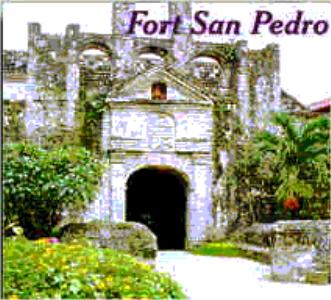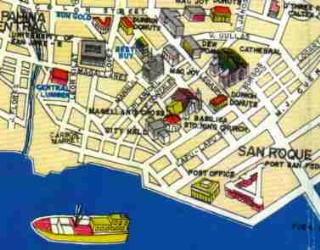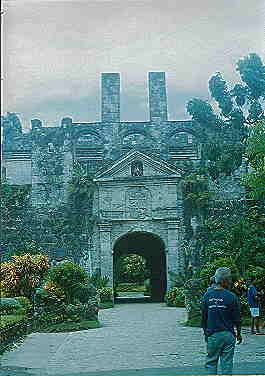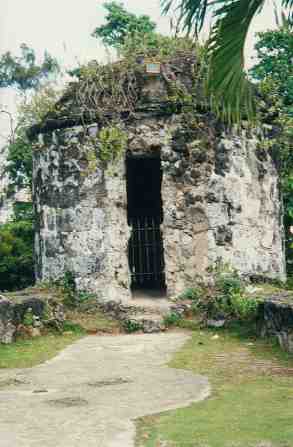FORT SAN PEDRO NATIONAL COLISEUM, PIER Area, Cebu City The smallest, oldest triangular bastion fort in the country was build in 1738 to repel Muslim raiders. In turns, it served as a stronghold for Filipino revolutionaries. This served as the nucleus of the first Spanish settlement in the Philippines. It has a total inside area of 2,2025 sq. Meters. The walls are 20 feet high, 8 feet thick and the towers are 30 feet high from the ground level. Work first started on May 8, 1565 with MIGUEL LOPEZ DE LEGASPI breaking the ground. After the battle of Manila Bay, Commodore George Dewey turned the fort to the local Cebuanos; then it became an American Warwick Barracks during the American Regime which was later converted into classrooms where the Cebuanos received formal education. During World War II, from 1941 to 1945, it served as fortification for Japanese soldiers, when the battle for liberation was fought, the fort served as an army camp. After 1950, Cebu Garden Club took over and fixed the inner court into a miniature garden. For a couple of years it also housed the Cebu City Zoo. In 1978 to August 15, 1993, it housed the offices of the Department of Tourism and Philippine Tourism Authority. At present, it is under the care and administration of the National Museum, a historical park. |


FORT SAN PEDRO NATIONAL COLISEUM, Legaspi Ext., Cebu City- Artifacts taken from the old Spanish Galleon known as SAN DIEGO within the deep sea of Fortune Island off the coast of Nasugbo, Batangas are on display in this centuries-old Fort. The museum used to house the offices of the Department of Tourism and the Philippine Tourism Authority. The artifacts on display include Ming porcelain pieces of all sizes, coins, lockets, swords fragments, cannons and helmets. Well-kept flower beds, cannons, lush vegetation, and neat walkways align its interiors along with a canteen and a museum. Open from 8AM -7PM daily. Entrance fee is P15/head. |








Cebu Harbour early in the morning

Fort San Pedro
Malapascua Island

Visayan Sea, Cebu, Philippines,